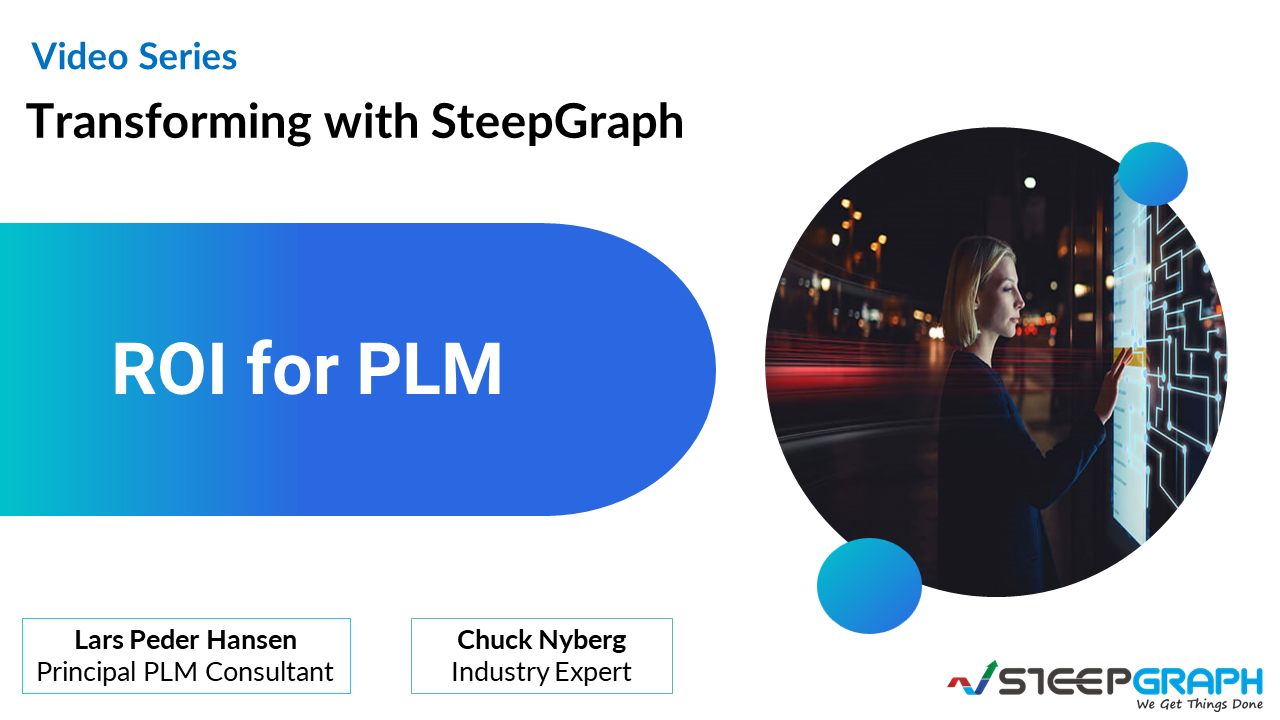In this edition of Transforming with SteepGraph, presented by Lars Peder Hansen and Chuck Nyberg, we explore the significant impact of Product Lifecycle Management (PLM) on Return on Investment (ROI). We’ll uncover the key metrics and strategies that highlight the true value of PLM solutions, providing insights into how businesses can maximize their ROI by optimizing product development and operational efficiency.
Unlocking the ROI of PLM: Navigating the Complexity
Implementing a Product Lifecycle Management (PLM) system is no small feat, but for businesses looking to streamline operations and stay competitive, the investment is often a necessity. Yet, one of the biggest challenges many face is demonstrating the return on investment (ROI) from PLM. It’s not as simple as measuring the benefits of a new machine that produces 400 more items per hour. The ROI of PLM is complex, often involving both tangible and intangible benefits that can be difficult to quantify.
Why is Calculating PLM ROI So Challenging?
Unlike traditional investments, PLM influences not just technical systems but also the way people and processes function within an organization. While companies often seek clear timelines for returns, relying on standard ROI methods can lead to inaccurate forecasts.
The conversation emphasized that tracking ROI for PLM is important, but it’s equally vital to recognize PLM as more than just an IT tool. It’s a transformational approach to managing information, driving both immediate cost efficiencies and long-term strategic value for the business.
Key Factors in Calculating PLM ROI
While it’s a complex task, there are several factors that businesses can measure to calculate the ROI of their PLM system:
- Cost Savings: PLM can reduce errors and rework, shorten development cycles, and optimize materials and resources.
- Improved Productivity: Enhanced collaboration, automated workflows, and improved access to information are critical productivity gains that a PLM system can offer.
- Compliance and Risk Management: PLM can help with regulatory compliance and reduce risks through better traceability and quality management.
- Faster Time to Market: With more efficient processes, businesses can adapt to market changes and introduce new products faster.
- Indirect Benefits: Metrics like reduced meetings, increased collaboration, and even the number of new ideas or patents can be indirect indicators of the ROI from PLM.
Before and After: Measuring the ROI
To truly capture the ROI from PLM, businesses must start measuring long before implementation begins. Establishing a baseline is critical, as it allows you to compare the performance of your processes before and after PLM is in place. Hanson advises that businesses often fail to track this crucial “before” data, making it impossible to accurately assess ROI.
The key is to measure the right things, tailored to your business objectives. Whether it’s time saved on design changes, reduced manual processes, or faster product approvals, having clear goals will help you focus on the most relevant metrics.
More Than Numbers: The Strategic Value of PLM
For many executives, ROI is expected to come with a number, ideally underlined and easily interpreted. However, Hanson and Naber argue that focusing solely on financial gains can cause businesses to miss the bigger picture. PLM should be seen as a strategic tool that enables companies to stand out from the competition.
PLM isn’t just about saving costs—it’s about using the system to differentiate your business in the marketplace. This could mean faster innovation, better quality products, or even the ability to outpace competitors who haven’t invested in PLM.
.
Questions for Reflection:
- What practices did you use for calculating ROI for PLM?
- How accurate did your ROI calculation turn out to be?
- How much did you involve top management, and did they contribute and follow up?
Conclusion
While calculating the ROI of PLM may seem like a daunting task, it’s a critical step in ensuring that your investment is worthwhile. By focusing on both the tangible and intangible benefits, and by measuring key metrics before and after implementation, businesses can get a clearer picture of the value PLM brings.
In the end, PLM is not just about immediate cost savings—it’s about transforming how your business operates and competes. As Hanson summed up, it’s complex, but with careful planning and measurement, businesses can unlock the true ROI of their PLM systems.




